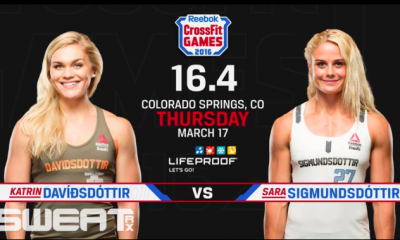Inside Sweat RX
Caveman Diet
Paleo vs. Primal
The Caveman Diet is one of the many names for the Paleo diet, essentially biologically appropriate eating. It is considered by many experts to be an effective answer for losing weight, improving health, increasing longevity, and optimizing fitness. Paleo vs. Primal: Many people consider these to be different words for the same diet. Loren Cordain and Robb Wolf are the biggest names behind the Paleo diet. Loren Cordain tended to favour lean meats, but now that only applies to grass-fed meats, not grain-fed. Mark Sisson developed the Primal diet, which is based on the same principles as Paleo. The main difference is his diet includes sugar-free and full-fat dairy products, whereas Paleo tends to stay away from dairy and saturated fats and restricts egg consumption. The Primal diet allows these foods and takes it a step further by encompassing a holistic approach to life.
Carb Timing for Best Results
People often ask about the glycemic index (GI) of various carbohydrates and how those figures relate to fuelling for endurance exercise. Here’s the scoop: GI rates the speed at which the body breaks down carbohydrates into glucose. The lower the GI, the slower the process, and therefore the more stable the energy releases.
Pre-workout, your body needs carbs to fuel the intense workout you have planned at the gym, and for this you’ll need to consume complex low-glycemic carbs (carbs that digest slowly in the body and don’t cause an insulin spike) about an hour or so prior to hitting the weights. However, during and immediately following exercise, a high-GI carbohydrate, one that elevates blood sugar levels rapidly, is desirable, as long as you keep caloric intake within approximately 280 calories an hour. Effects associated with consumption of high-GI carbohydrates are not a concern during and immediately after exercise; high-GI carbs actually perform better than low-GI carbs at these times.
Grass-Fed Beef: On the Rise

When transitioning to the Primal diet, a lot of people get tripped up on the question of grass- versus grain-fed beef. The consumption of grass-fed beef has seen a steady growth. From 1998 to 2013, the number of serious grass-fed beef producers in the United States grew from just 100 to over 2,000. Market shares grew in the same time frame from just $2 million to $380 million (over $1 billion if you include imported grass-fed beef). Today you can find grass-fed beef (lamb and bison) in standard supermarkets, not just your specialty upscale grocers. Farmers’ markets are exploding, and the slow food/locavore movements are picking up steam. Availability of grass-fed beef is on the rise with growing consumer awareness and demand.
Ginger as an Anti-Inflammatory

Ginger contains potent anti-inflammatory compounds called gingerols. These substances are believed to explain why so many people with osteoarthritis or rheumatoid arthritis experience reduced pain and improved mobility when they consume ginger regularly. In two clinical studies involving patients who responded to conventional drugs and those who didn’t, physicians found that 75 percent of arthritis patients and 100 percent of patients with muscular discomfort experienced relief of pain and/or swelling. If you have sports injuries, such as sprains or strains, use ginger to help ease inflammation. Ginger root has other health benefits, as well. It obstructs the production of cholesterol by the liver, thereby helping to reduce the level of LDL cholesterol. It might also prevent clots and lower high blood pressure because it helps improve circulation.
























